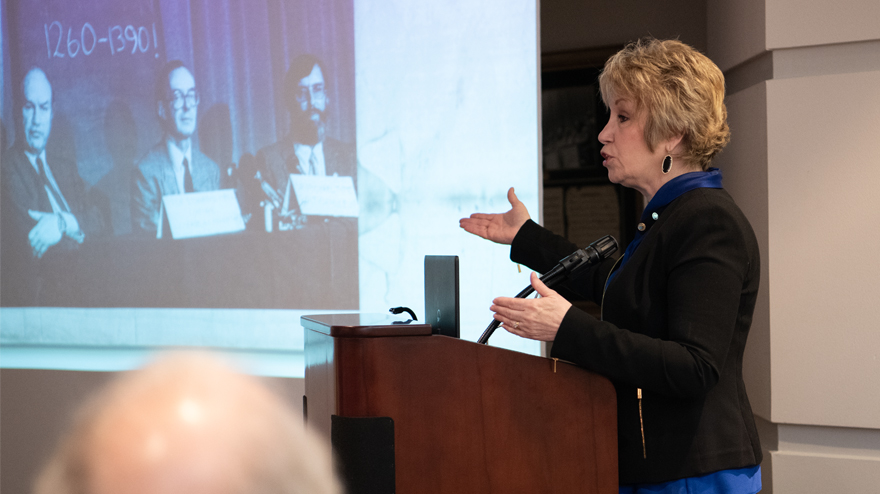SHREVEPORT – The world’s most analyzed artifact.
The community is invited to explore the history and mystery of The Shroud of Turin through a lecture March 23 by Dr. Cheryl White, one of the world’s most renowned Shroud researchers.
The 10 a.m. lecture is free and open to the public at the LSUS Science Lecture Auditorium.
The Shroud of Turin is a linen burial cloth bearing the image of man that appears to have been crucified, possibly Jesus of Nazareth.
White, an LSUS professor history who has studied the Shroud for three decades, is making her fourth trip to The Vatican Secret Archives in Rome this week.
“It’s a really fascinating confluence of science, history, philosophy, art and religion,” White said. “From all these different disciplines that have studied the Shroud, we still don’t understand this object.
“There’s no process in the Middle Ages that could have produced it, and we can’t produce it in the 21st century. It’s sort of an exploration in mystery. How do we process what we full don’t understand?”
The Vatican Secret Archive holds the private papers of popes dating back to the 13th century (starting with Pope Innocent III, 1198-1216) and other surviving Catholic Church documents from previous centuries.
Access is limited to scholars who “demonstrate a significant historical question in which the Church’s holdings” might be of assistance.
White’s trips to The Vatican along with the March 23 lecture are mostly funded through the Hubert Humphreys Endowed Professorship of History and the LSUS Foundation.
White specializes as a medievalist, which corresponds to the time when the Shroud surfaces (or resurfaces) in the European historical record.
French knight Geoffroi de Charny built a church in Lirey, France, to house various relics, which included the Shroud, displayed beginning in 1355.
Charny is a descendant Knights Templar members who took part in the Crusades, which included the sack of Constantinople in 1204 during the Fourth Crusade. That occurred when Pope Innocent III was head of the Catholic Church, although the intended mission was the recapture of Jerusalem.
The sacking of the Byzantine capital (present day Turkey) saw the transport of many artifacts from what was the most significant city in Christendom at the time.
“For those of us who have studied this particular relic, we know that there is a record of something that sounds like it in Constantinople in 944,” said White, who appeared on an episode of The History Channel’s “History’s Greatest Mysteries” about the Shroud in February. “There’s a historical record called the Burial Linen of Christ in the Imperial Relic Inventory.
“Before that, we know that it came from Edessa, Turkey, which claimed to have a burial linen of Christ in 525. For me, I believe the Shroud was looted from Constantinople in 1204 and taken underground, where it resurfaces some 150 years later in the possession of a French nobleman.”
The Shroud has a much more recorded and agreed upon history from 1355.
Fast forward to 1978, the first time in which the Shroud underwent scientific analysis, and White said those results created just as many questions as answers.
“I knew some of the people who were on that original team, including a Jewish photographer named Barrie Schwortz,” White said. “He said he fully expected that he would walk up to the artifact and be able to see brush marks or other evidence that this was a work of art.
“The project produced all kinds of scientific information, and what we do know is that it’s not a work of art. He’s dedicated his entire life to this one object.”
Other results include 56 different types of pollen, soil samples, and human blood.
“Now we’re learning more and more about the textile of the Shroud itself, and there’s new information coming out this year that’s pretty incredible,” White said. “When you look at the image of a man in the cloth, you see someone who has been scourged and crucified, beaten by a Roman flagrum (whip) and capped with thorns – whatever it is, we know who it’s meant to represent.
“We just don’t’ know how the image was created.”




